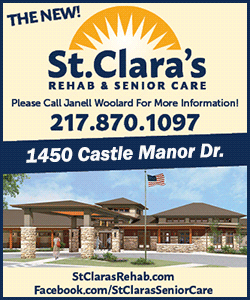|
Fuelling independence? Scotland's oil hub
embraces green energy
 Send a link to a friend
Send a link to a friend
 [September 08, 2018]
By Elisabeth O'Leary [September 08, 2018]
By Elisabeth O'Leary
ABERDEEN, Scotland (Reuters) - Scotland's
leader Nicola Sturgeon launched on Friday a major renewable energy
project boasting the world's most powerful wind turbines, which she
hopes will also propel the independence ambitions of her nationalist
party.
The 11 191-metre-high turbines in the waters of Aberdeen Bay will
eventually produce 312 GWh of power a year - enough to power 80,000
households - helping to reduce Scotland's reliance on its oil industry.
"Scotland is a world leader in energy and that is good for our present
and our future, whatever that may be," Sturgeon told Reuters, standing
on a ferry underneath the churning blades of the new European Offshore
Wind Deployment Centre (EOWDC), which is run by Swedish utility
Vattenfall.
The Scottish National Party she leads, which is seeking to maintain its
drive for independence from the United Kingdom, has embraced renewable
power as the center of its energy policy.
The party's emphasis on optimistic-looking future oil revenues was seen
by many as a key weakness in the failed campaign to win an independence
referendum in 2014.

An SNP strategy published this year removed oil from the party's
baseline plans for the economy, describing it instead as a "bonus",
while renewables were seen as one of Scotland's economic motors, with
food and drink and finance.
At the same time, renewable projects such as EODCW enhance the SNP's
appeal to the 61 percent of Scottish voters who think climate change is
an urgent concern, according to a survey of households published by the
Scottish government this week.
Sturgeon wants 50 percent of all of Scotland's energy to come from
renewables by 2030, compared with an EU target of at least 27 percent.
Scotland's energy minister, Paul Wheelhouse, said the renewable power
and low carbon sector provided 49,000 jobs in Scotland, compared with
115,000 in oil and gas, but the difference was narrowing.
With Scots unhappy about Britain's exit from the European Union, another
referendum for Scottish independence is a possibility which Sturgeon
does not rule out.
The EU's financial support for renewable projects such as the EOWDC has
underpinned support for the bloc.
[to top of second column]
|

Scotland's first minister Nicola Sturgeon speaks at the inauguration
of the European Offshore Wind Deployment Centre (EOWDC) off
Aberdeen, Scotland, Britain Sep 7, 2018. REUTERS/Russell Cheyne

Scotland has the majority of the UK's onshore wind energy resources
and the seas around Scotland have up to 25 percent of Europe's tidal
power, 10 percent of its wave power and around 25 percent of
European offshore wind resource potential.
Even so, the value of the oil still under the North Sea has defied
predictions of a quick collapse and still dominates Scotland's
economy for now, especially with the recent recovery in the oil
price.
At the same time, more efficient techniques for dismantling old oil
rigs in deep and often treacherous waters is a skill that Scotland
is pioneering as another revenue earner.
Not everyone is a fan of the new wind power project in Aberdeen Bay.
Before he was elected as U.S. president, Donald Trump objected to
the wind farm being located in full view of his golf course at
Balmedie. He was defeated in a court battle.
"Maybe on his next trip to Scotland he can come and see it and
change his mind," Sturgeon said.
(Reporting by Elisabeth O'Leary; Editing by William Schomberg and
Toby Chopra)
[© 2018 Thomson Reuters. All rights
reserved.]
Copyright 2018 Reuters. All rights reserved. This material may not be published,
broadcast, rewritten or redistributed.
Thompson Reuters is solely responsible for this content.
 |